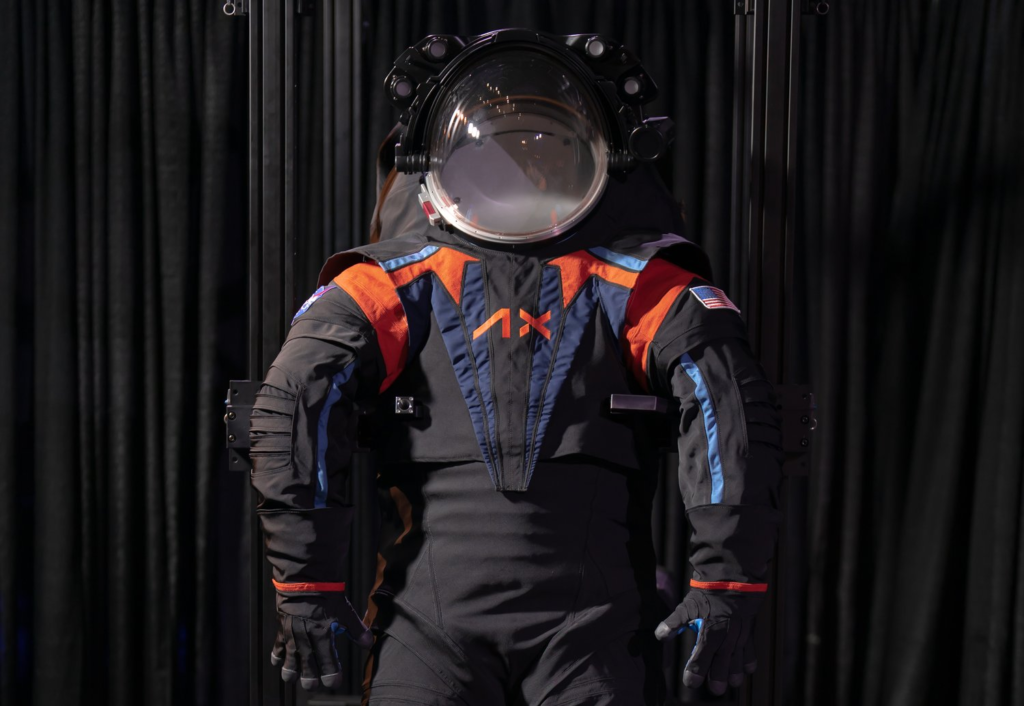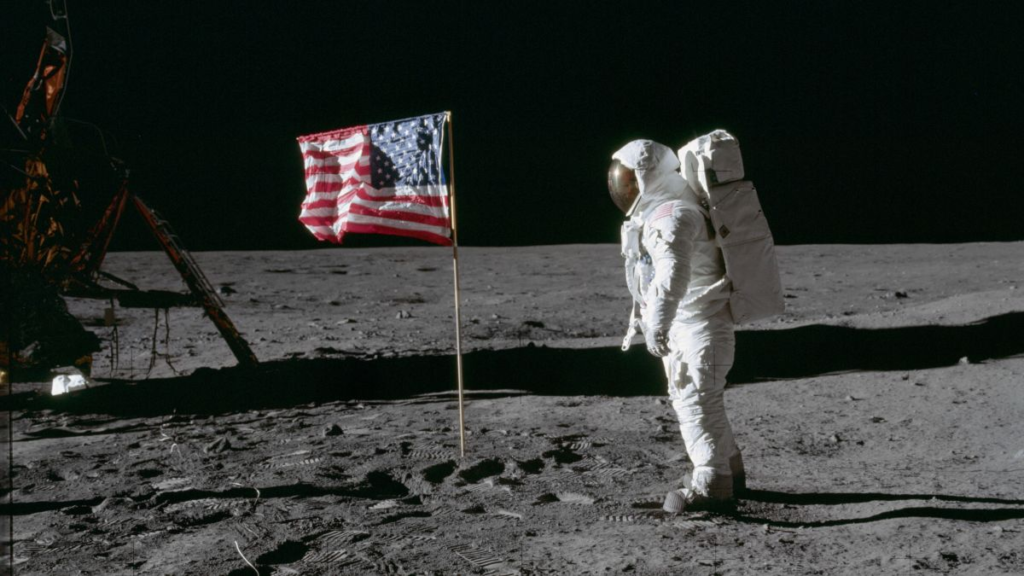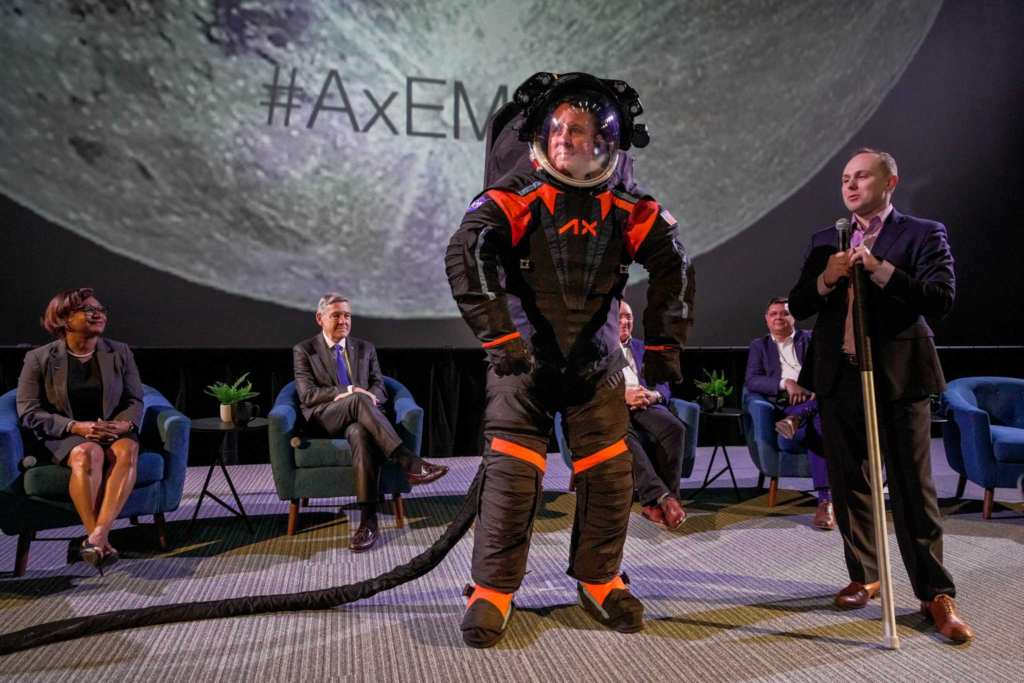
The New Spacesuits Supporting NASA’s Return To The Moon
Over half a century ago, multiple manned missions saw astronauts walking, running, jumping, and working on the Moon’s surface. While the spacesuits of that time kept them safe, it’s obvious from the footage alone that they were far from perfect. In Apollo’s case, these suits did what was needed of them, for Artemis however, NASA requires something modern and capable of a sustained lunar presence.
This is why late last year NASA awarded Axiom Space a $228 million task order under an even bigger contract. Just over one week ago, Axiom Space unveiled its design for the future of human exploration in space. Specifically, the new Axiom Extravehicular Mobility Unit (AxEMU) spacesuit prototype was revealed, with a full fleet of training spacesuits to be delivered to NASA by late this summer.
As far as upgrades, the new suit offers a host of features meant to facilitate a safe and efficient future on the Moon. Here I will go more in-depth into exactly what this spacesuit has to offer, the problem with past models, its application on the Moon, and more.
The Spacesuit Challenge

Spacesuits by themselves are a big challenge but the problems only get more complicated when designing something for the Moon. Beyond Earth’s atmosphere, dust for example is insidious. On the Moon, it’s made of crushed rock and is damaging to everything from lunar landers to spacesuits and human lungs if inhaled. Dust mitigation has been an issue for NASA since Apollo. When astronauts were entering and exiting the lunar module, dust got everywhere – it clogged mechanisms, interfered with instruments, caused radiators to overheat, and even tore up their spacesuits. “We learned from Apollo that lunar dust can be less than 20 microns (about 0.00078 inches) in size,” said Sharon Miller, the passive dust shedding material program’s principal investigator at NASA Glenn. “The dust is very fine, abrasive and sharp, like tiny pieces of glass, making it more of a dangerous threat than just a simple nuisance.”
In addition to the problem with dust, past Apollo footage reveals an obvious problem related to mobility. Videos from the surface show astronauts continually falling and proceeding to struggle trying to get back on their feet. If Artemis expects to set up a more permanent human presence with astronauts consistently on the surface, these two big problems among others need to be fixed. Thankfully, NASA knows this and decided to let Axiom Space among other companies work on the future of this technology.
Not long ago in September of last year, Axiom Space announced it had been awarded the first task order under its NASA Extravehicular Activity Services (xEVAS) under a full $1.26B Contract. Recently, we got to see a sneak peek at this new suit and what the company has planned. Specifically, the new Axiom Extravehicular Mobility Unit (AxEMU) spacesuit that was revealed at Space Center Houston’s Moon 2 Mars Festival is a prototype, with a full fleet of training spacesuits to be delivered to NASA by late this summer. The spacesuit will provide astronauts with advanced capabilities for space exploration while providing NASA commercially developed human systems needed to access, live and work on and around the Moon. The advanced spacesuit ensures astronauts are equipped with high-performing, robust equipment and is designed to accommodate a wide range of crew members.
“We’re carrying on NASA’s legacy by designing an advanced spacesuit that will allow astronauts to operate safely and effectively on the Moon,” said Michael T. Suffredini, Axiom Space president and CEO. “Axiom Space’s Artemis III spacesuit will be ready to meet the complex challenges of the lunar south pole and help grow our understanding of the Moon in order to enable a long-term presence there.”
Leveraging NASA’s Exploration Extravehicular Mobility Unit (xEMU) spacesuit design, the Axiom Space spacesuits are built to provide increased flexibility, greater protection to withstand the harsh environment and specialized tools to accomplish exploration needs and expand scientific opportunities. Using innovative technologies, the new spacesuit is expected to enable exploration of more of the lunar surface than ever before. It’s important to point out that while the prototype features a black cover, that won’t actually be what it looks like on the Moon. Since a spacesuit worn on the Moon must be white to reflect heat and protect astronauts from extremely high temperatures, a cover layer is currently being used for display purposes only to conceal the suit’s proprietary design.
Axiom’s New Spacesuit

After a while, NASA chose to use a commercial services contract for development of the new spacesuit, whereby NASA purchases moonwalking services from Axiom Space. Under this model, the company is encouraged to pursue other commercial customers for their moonwalking services. This mutually beneficial approach intends to help bolster an emerging commercial market and grants NASA the right to use the data and technologies developed under the contract for future exploration efforts.
As partially mentioned prior, NASA established the foundation for the AxEMU with the agency’s Exploration Extravehicular Mobility Unit (xEMU) prototype development efforts that advanced spacesuit designs for multiple destinations. Axiom Space used the experience, expertise, and data behind the xEMU as a basis for the design and development of the AxEMU, including advancements in technology, training, astronaut feedback on comfort and maneuverability, and compatibility with other NASA systems. This leaning on NASA’s prior development efforts is helping Axiom Space reduce technical and schedule risk.
NASA experts defined the technical and safety standards by which the spacesuits will be built, and Axiom Space agreed to meet these key agency requirements. The AxEMU features the range of motion and flexibility needed to explore more of the lunar landscape, and the suit will fit a broad range of crew members, accommodating at least 90 percent of the US male and female population. In the near future, Axiom Space will continue to apply modern technological innovations in life support systems, pressure garments, and avionics as development continues.
Axiom Space is responsible for the design, development, qualification, certification, and production of flight training spacesuits and support equipment, including tools, to enable the Artemis III mission. The company will test the suit in a spacelike environment prior to the mission. In this case, NASA maintains the authority for astronaut training, mission planning, and approval of the service systems. Following Artemis III, assuming the results are promising, the agency will compete future Artemis mission services under the Exploration Extravehicular Activity Services (xEVAS) contract. NASA is using the contract to meet the agency’s spacewalking needs for both the Moon and the International Space Station. The agency recently awarded a task order to Collins Aerospace, who is also competing within the xEVAS contract, to develop new spacesuits for astronauts to wear during spacewalks on the space station. Both vendors will compete for future spacewalking and moonwalking services task orders.
Following two Artemis test missions, Artemis III, currently planned for 2025, will mark humanity’s first return to the lunar surface in more than 50 years. NASA will make history by sending the first humans to explore the region near the lunar South Pole. These astronauts will be wearing the next generation of spacesuits. After touchdown, the surface crew’s first task will be to ensure all systems are ready for their lunar surface stay. Then they will rest, eat, and recharge for the first full day of the expedition. During their time on the Moon, the astronauts will do scientific work inside Starship and conduct a series of moonwalks, exiting Starship to explore the surface. The astronauts will don advanced spacesuits, exit through an airlock, and descend on Starship’s elevator.
During these first moonwalks, the astronauts will take pictures and video, survey geology, retrieve samples, and collect other data to meet specific scientific objectives. The view from the lunar South Pole region will look very different from the photos taken on Apollo missions in the Moon’s equatorial region. The Sun will hover just above the horizon, casting long, dark shadows across the terrain, which the crew will explore using headlamps and navigational tools. The information and materials collected by Artemis III astronauts will increase our understanding of the mysterious South Pole region, the Moon, and our solar system.
Focusing back on the suit, Axiom points out that spacesuits perform at the edge of exploration, so mobility and agility are core to the AxEMU design. Utilizing innovative soft and hard joints for an increased range of motion will enable astronauts to walk on the Moon more effortlessly, perform more precise geological and scientific tasks, and translate on space stations easier, all while maximizing comfort. In addition, an agile architecture is meant to enable AxEMU to meet the needs of individual, commercial, and government customers with a broad set of requirements, resources, and mission objectives. Tailored to those needs and developed to last, the suit can be maintained on orbit, reducing the time and cost required to operate missions that deliver results to benefit the future of robust innovation in low-Earth orbit and beyond. Something we can hope to see more of as time goes on.
Conclusion
Axiom Space is in the process of creating the next generation of spacesuits for the Artemis program. With Artemis III approaching and progress being made, these suits will need to be completed and tested in space to make sure they’re ready. We will have to wait and see how it progresses and the impact it has on the space industry.
